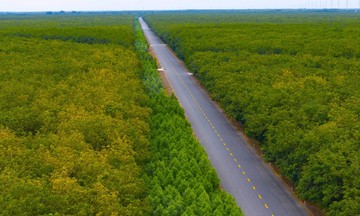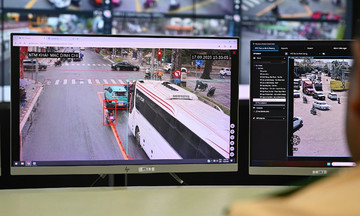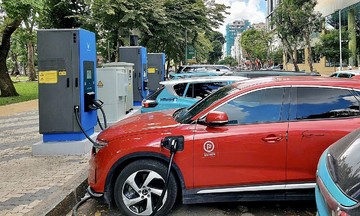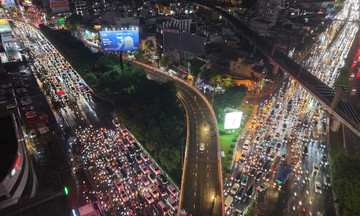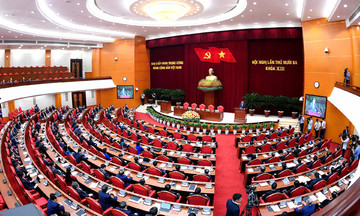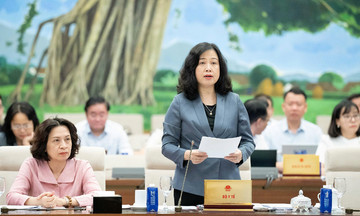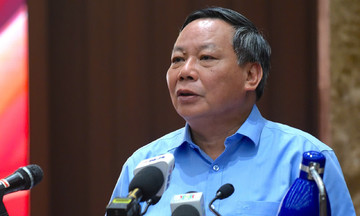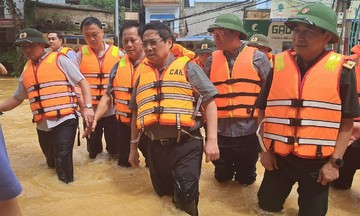On 28/8, Prime Minister Pham Minh Chinh published an article titled "The Government Under the Leadership of the Party - 80 Years of Journey for the Country and People".
The article retraces Vietnam's 80-year journey under the leadership of the Party and President Ho Chi Minh. It highlights the government's consistent collaboration with the political system and the people to overcome challenges, achieve success in resistance and nation-building, bring independence, freedom, and happiness to the people, and steer the country towards innovation, integration, and development.
Following the success of the August Revolution on 28/8/1945, the Provisional Government of the Democratic Republic of Vietnam issued a declaration to the nation and the world announcing the formation of the new government. It also unveiled the 15-member national unity cabinet, headed by President Ho Chi Minh. On 2/9/1945, President Ho Chi Minh, on behalf of the Provisional Government, read the Declaration of Independence, giving birth to the Democratic Republic of Vietnam and ushering in an era of independence and freedom.
After the Dien Bien Phu victory, the French were compelled to negotiate at the Geneva Conference with the Vietnamese Government, led by Deputy Prime Minister and Foreign Minister Pham Van Dong.
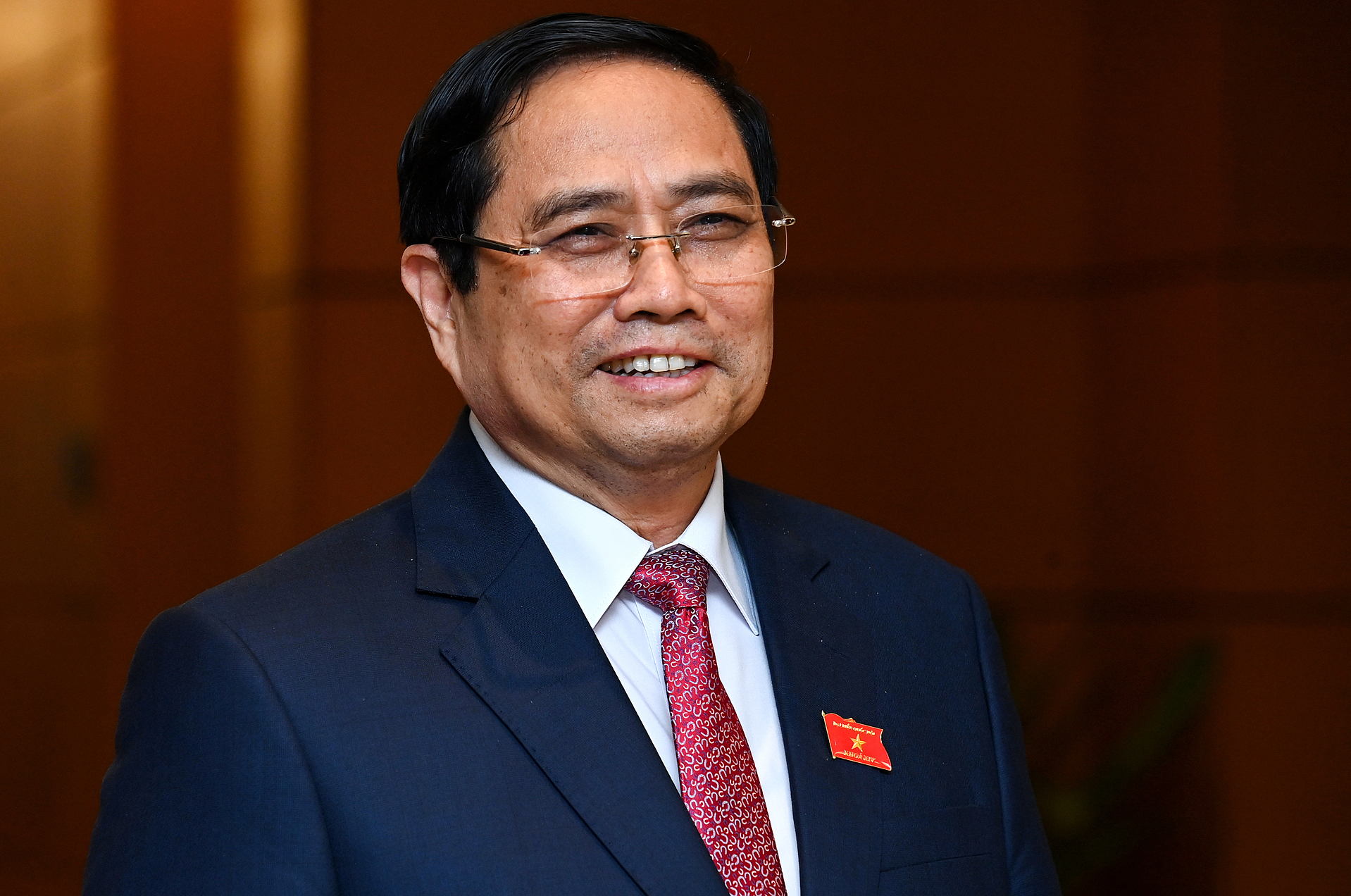 |
Prime Minister Pham Minh Chinh. Photo: Giang Huy |
Prime Minister Pham Minh Chinh. Photo: Giang Huy
During the resistance against the US, the government focused on mobilizing national strength, coupled with the strength of the era. It simultaneously pursued two tasks: building socialism in the North and fighting for national liberation and reunification in the South. Under the direction of the Politburo, the government negotiated and signed the Paris Peace Accords in 1973, aiming to end the war and bring peace to Vietnam and Indochina. On 30/4/1975, the Ho Chi Minh Campaign achieved complete victory, liberating the South and reunifying the country after more than 20 years of division.
Following reunification, the government concentrated on economic development, overcoming the consequences of war, restoring production and business, firmly defending the borders, and assisting the Cambodian people in escaping the Khmer Rouge regime.
From 1986, the government (then the Council of Ministers) actively directed all levels, sectors, and localities to implement economic reforms based on three pillars: eliminating bureaucratic subsidies, developing a multi-sectoral and multi-ownership economy, and opening up and integrating with the outside world. Vietnam transitioned from an aid-dependent economy under embargo to an open and dynamic one. It became one of the fastest-growing countries in the region and the world, ranking among the top 15 nations attracting foreign investment and the top 20 in global trade. Vietnam was recognized as a successful model in achieving the Millennium Development Goals (MDGs), accomplishing poverty reduction targets 10 years ahead of schedule.
Simultaneously, Vietnam's foreign relations continued to expand. The country joined the United Nations (1977), ASEAN (1995), signed the US-Vietnam Trade Agreement (2000), and has signed and participated in 17 Free Trade Agreements (FTAs). Vietnam maintains diplomatic relations with nearly 200 countries and comprehensive, strategic, or comprehensive strategic partnerships with 38 countries, including all five permanent members of the UN Security Council.
Recently, the government has focused on implementing administrative reforms, streamlining the central apparatus, merging provincial and communal administrative units, concluding the historical mission of the district level, and organizing local government into two levels. Following this restructuring, the 2021-2026 government comprises 14 ministries, three ministerial-level agencies, and five affiliated agencies. Local government consists of two levels, with 34 provinces and cities and 3,321 communes, wards, and special zones.
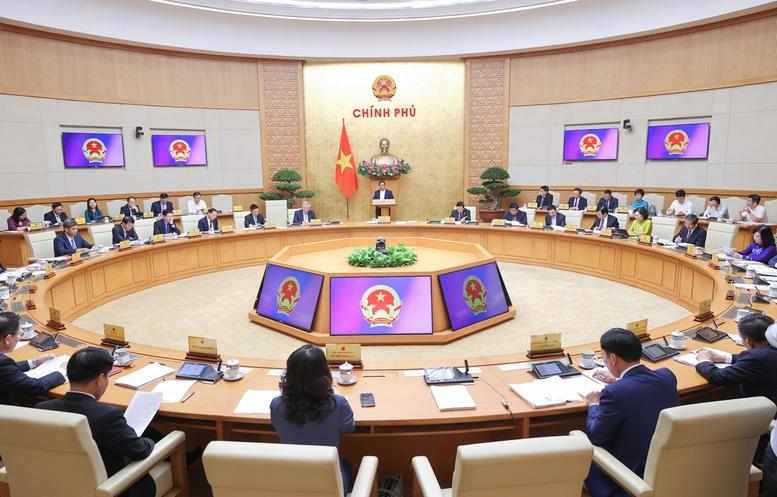 |
A regular government meeting. Photo: Nhat Bac |
A regular government meeting. Photo: Nhat Bac
The government continues to develop and perfect the three pillars of socialist-oriented democracy, a socialist rule-of-law state, and a socialist-oriented market economy. Three strategic breakthroughs have been identified, along with establishing a new growth model, restructuring the economy, promoting industrialization and modernization, and building new productive forces.
Numerous key infrastructure projects, including expressways, airports, seaports, digital infrastructure, education, healthcare, and culture, are being promoted. Notably, the government is directing the urgent implementation of the Lao Cai - Hanoi - Hai Phong high-speed railway project and focusing on preparing for the North-South high-speed railway and urban railways in Hanoi and Ho Chi Minh City, along with Ninh Thuan nuclear power plants 1 and 2.
"Governments throughout the terms have demonstrated strong determination, great effort, and decisive action, working alongside the people to achieve significant, historic accomplishments in all fields," the article states.
Prime Minister Chinh emphasized that the government will promote unity and decisive action, constantly innovating to fulfill its mission and lead the country into a new era of prosperity and strength, standing shoulder to shoulder with powerful nations worldwide.
He outlined the focus on building a "constructive, development-oriented, integer, and action-oriented government that serves the people." The administrative reform will shift from a dynamic process to a more streamlined and unified approach, emphasizing decentralization and streamlining.
Institutions will continue to be improved to liberate productive forces, effectively mobilize resources, and create new development momentum. The government is prioritizing training a high-quality workforce and is particularly focused on attracting, valuing, and developing talent.
Vietnam will promote economic growth coupled with economic restructuring and a new growth model based on science, technology, innovation, digital transformation, and a high-quality workforce. Industrialization and modernization of the economy will be advanced while maintaining macroeconomic stability, controlling inflation, and ensuring major economic balances.
"With utmost determination and specific plans, we strive to achieve a GDP growth rate exceeding 8% in 2025, creating momentum and confidence for an average growth of 10% or more in the subsequent period," the article states.
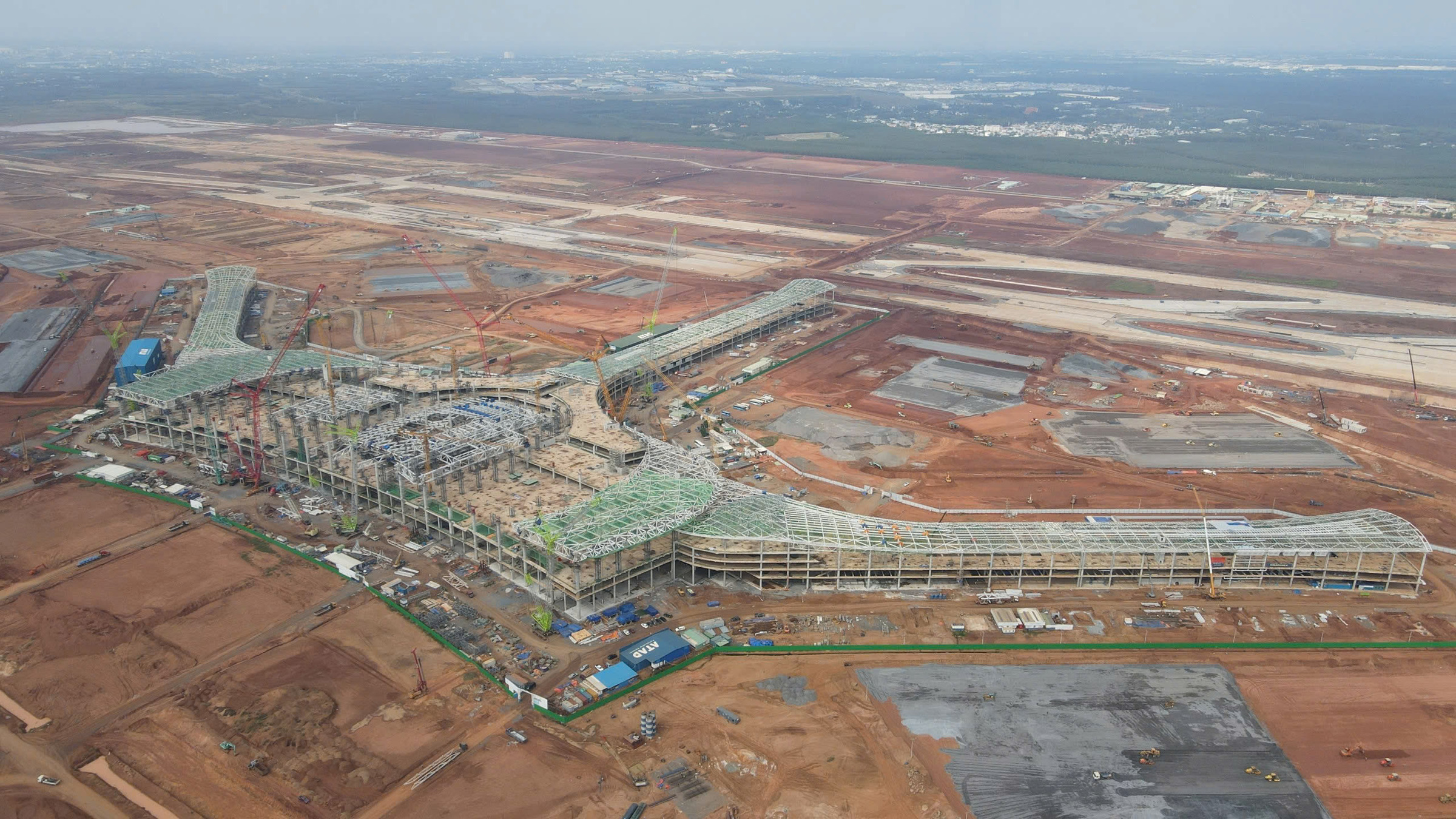 |
Long Thanh Airport, a crucial national project under construction, is expected to be partially inaugurated by the end of 2025. Photo: Phuoc Tuan |
Long Thanh Airport, a crucial national project under construction, is expected to be partially inaugurated by the end of 2025. Photo: Phuoc Tuan
The government will decisively implement breakthrough policies for science, technology, innovation, and national digital transformation, international integration in the new context, law development and enforcement, private sector development, state economy, education and training, healthcare, and culture.
Concurrently, the government will strengthen green transition efforts and implement disaster prevention and climate change response programs, particularly in the Mekong Delta. It will also address flooding and landslides in the midlands and mountainous regions and work to resolve serious pollution issues in major cities.
The government will continue to consolidate and enhance national defense and security capabilities, firmly protecting national independence, sovereignty, and territorial integrity. It will build a revolutionary, regular, elite, and modern People's Army and People's Public Security force.
Vu Tuan
>>Article by Prime Minister Pham Minh Chinh





